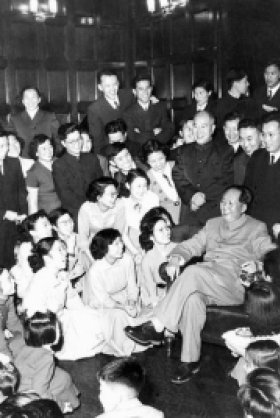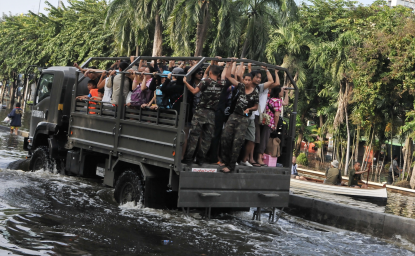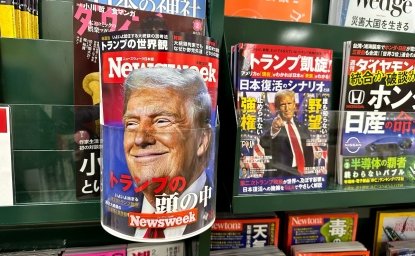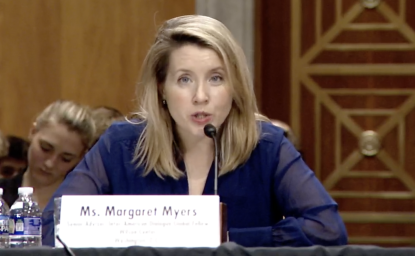Caught in the Split: Chinese Students in the Soviet Union, 1960-1965



CWIHP e-Dossier No. 52
Caught in the Split: Chinese Students in the Soviet Union, 1960-1965
You Lan
When students from the People’s Republic of China were sent to the Soviet Union for the first time in 1951, they became living proof of the fraternal and close nature of the Sino-Soviet relationship. Unsurprisingly, the Chinese and Soviet communist parties spared few efforts to spread glowing propaganda about these students. But with the emergence of Sino-Soviet differences, and particularly after the ideological contradictions between China and the Soviet Union were made public in 1960, the circumstances under which Chinese students were sent to the Soviet Union became increasingly complex.
Even early on in the split, considerable pressure was placed on Chinese students by Soviet authorities. For example, the Soviets narrowed the range of majors for Chinese students that it would accept; placed restrictions on internship opportunities available to Chinese students; and otherwise enhanced the supervision and control of Chinese students.[1] And, as the Chinese government feared, the Soviets also actively “indoctrinated [Chinese students] with revisionist thinking,” and even “drew [Chinese students] over to their side, luring them with promises, and mobilizing them to remain in the Soviet Union.”[2] This behavior in turn prompted China to revise how it thought about and handled the management of Chinese students overseas. The Chinese government made significant adjustments in the summer of 1960, when it first arranged for students to return to China to receive anti-revisionist political education and to ensure that the ideology among the students abroad was consistent with the political mood at home.[3]
In 1963, the ideological polemics between China and the Soviet Union reached new heights. This was also the year when the Chinese government’s policies for students in the Soviet Union underwent even greater changes. Under the logic that “open polemics can do no harm,”[4] the Chinese demanded that overseas students “take full advantage of the current favorable situation” and “do everything possible to disseminate pamphlets on China’s anti-revisionism and the Chinese [Communist] Party’s standpoints to the outside.”[5] Disputes began to arise between Chinese and Soviet officials as Chinese students were found distributing such pamphlets at universities across the Soviet Union. The students had translated anti-revisionist articles from the Renmin Ribao (People’s Daily) and Hongqi (Red Flag) into Russian with the intention of making these materials freely available in public places in the Soviet Union.[6] When Soviet officials tried to dissuade them, the students were antagonistic and stood their ground, even when it meant openly challenging their teachers and mentors from the universities.[7]
Of course, this behavior greatly frustrated the Soviet government. On 27 June 1963, the Ministry of Foreign Affairs announced that seven Chinese students had been “expelled” for distributing a letter from the CCP Central Committee which was addressed to, and critical of, the CPSU Central Committee.[8] Later, on 13 September 1963, Soviet customs authorities seized newspapers and other Chinese periodicals at Naushki on the Soviet-Mongolian border which had been carried by the crew of the Sino-Soviet International Train and by Chinese students.[9] After this incident, the Soviets continued to closely monitor and restrict the activities of Chinese students.[10]
The clash over Chinese students in the Soviet Union came to a head in 1965, a time when the Vietnam War was further aggravating the rift between Moscow and Beijing. In early March, the CPSU, as leader of the socialist camp, had convened a meeting of fraternal parties in Moscow. Although China had refused to participate, it was closely watching the meeting’s outcomes. Specifically, the final communique on aiding Vietnam’s anti-imperialist war roused Beijing’s ire and inspired a new round of ideological struggle with Moscow.
Concurrent with the meeting of communist parties, on 3 March the Vietnamese Student Association in the Soviet Union invited Chinese students to take part in demonstrations protesting Operation Rolling Thunder, the US bombing campaign of North Vietnam. The Chinese Embassy in the Soviet Union approved the participation of Chinese students, believing that it would be consistent with the spirit of supporting Vietnam’s struggle against the United States.[11] The next day, Vietnamese and Chinese students gathered in front of the US Embassy, throwing stones, ink bottles, and other objects at its walls. In an effort to restore order, Soviet police charged at the students and in the process injured and/or arrested many them, including about thirty Chinese students.
Almost immediately, Beijing sought to turn the news of this event to its advantage in the ideological and geopolitical struggle against the Soviet Union. Specifically, the CCP hoped to use the suppression of the protests as evidence that the Soviets were more interested in maintaining their relationship with Washington than they were in actually supporting Hanoi.
As early as 5 March 1965, the Chinese Foreign Ministry made an urgent proposal to the leadership of the CCP that “[we should] take hold of this incident and write a number of articles to expose the revisionist, false anti-imperialist, and false support [to North Vietnam] offered by the Soviets.”[12] The Chinese government insisted that the injured students receive treatment from hospitals in the Soviet Union in order to expose the Soviet government’s “brutal suppression.” At the same time, Chinese students joined with other foreign students to issue a joint note of protest to the Soviet government. Both measures were designed to gain the sympathy—and influence the positions—of other countries, particularly members of the socialist bloc, and to turn international opinion against the Soviet Union.
From the perspective of China’s leaders, obtaining the support of Vietnam in the Sino-Soviet split was of foremost importance. Immediately following the 4 March protests, China attempted to coordinate its attack on Moscow with Hanoi. The Chinese government notified Vietnam of the measures it planned to take against the Soviets, while Chinese diplomats actively exchanged their views and information with staff of the Vietnamese Embassy in the Soviet Union.[13] But this attempt to stage a two-pronged attack on the Soviet Union ultimately foundered, as the Vietnamese were unwilling to reveal an accurate count of the number of its students injured by Soviet authorities (which China had hoped to use in its domestic and foreign propaganda) and were otherwise dismissive of Chinese approaches.[14] Rather than forming a united front between Chinese and Vietnamese students in Moscow, then, Chinese students in the Soviet Union in fact became isolated. In the end, they were the sole objects of Soviet pressures in the aftermath of the 4 March protests.
Indeed, after 4 March, not only did the security services of the Soviet Union step up their surveillance of Chinese students, but universities also began to actively create new hardships for them.[15] These measures included further reducing the number of internships available to Chinese students and the implementation of new, stringent examination requirements.[16] Soviet security personnel were also allegedly harsh with the injured Chinese students receiving care in Soviet hospitals, even forcing some of them to enter psychiatric wards.[17]
Unsurprisingly, the clash on 4 March 1965 had a decisive influence upon the Chinese government’s policies toward overseas students. As a result of continuing Soviet pressure, Beijing had to accept that Chinese students who remained in the USSR would continue to face difficult circumstances. The Foreign Ministry declared on 21 March that it was no longer wise for Chinese students to take the lead, at least ahead of the Vietnamese, in organizing any further anti-American protests. Instead, the ministry advised that students should focus once again on their studies (though this suggestion was presented as a tactic for consolidating their positions).[18] The Chinese Embassy in the Soviet Union also recognized that “the 4 March incident was proof that as long as we wage the anti-American struggle, the Soviet revisionists will place their targets upon us.” Therefore, the embassy claimed that “[we] must pay more attention to [our] strategy.”[19]
As the contradictions between China and the Soviet Union intensified, the Chinese government had high hopes that Chinese students would be useful political advocates in its struggle against Moscow. But Beijing was clearly overoptimistic in this regard. After all, these were just students, and it was not really fair to force a political struggle onto those merely seeking to learn. More to the point, the Chinese government overestimated the support it would gain from Vietnam and the other so-called “revolutionary masses” in Asia, Africa, and Latin America in the struggle against the Soviets. As a result, China faced repeated setbacks when it used Chinese students for anti-revisionist purposes. In the end, China not only failed to achieve its so-called struggle for solidarity with Vietnam, but it also brought its already tense relations with Moscow closer to the brink of disintegration.
Translated by Charles Kraus
YOU Lan is a Ph.D. Candidate in the Department of History, East China Normal University. He was an ECNU-WWICS Cold War Studies Initiative Scholar in 2014.
List of Documents
Document No. 1
Cable from the Chinese Embassy in the Soviet Union to the Ministry of Foreign Affairs, ‘Chinese Students Intending to Participate in the Demonstrations Organized by the Vietnamese Students,’ 3 March 1965
[Source: PRC FMA 109-03984-02, 1-2. Obtained by You Lan and translated by Jake Tompkins.]
Document No. 2
Record of an Important Phone Call, ‘The Soviet Police have Captured and Wounded Chinese and Vietnamese Students who were Protesting against the United States,’ 4 March 1965
[Source: PRC FMA 109-03984-02, 3. Obtained by You Lan and translated by Jake Tompkins.]
Document No. 3
Phone Call with the Chinese Embassy in the Soviet Union, 5 March 1965
[Source: PRC FMA 109-03984-02, 5. Obtained by You Lan and translated by Jake Tompkins.]
Document No. 4
Cable from the Division of Soviet and East European Affairs to the Chinese Embassy in the Soviet Union, 5 March 1965
[Source: PRC FMA 109-03984-02, 7-8. Obtained by You Lan and translated by Jake Tompkins.]
Document No. 5
Cable from the Chinese Embassy in the Soviet Union to the Ministry of Foreign Affairs, ‘Soviet Suppression of Student Demonstrations,’ 5 March 1965
[Source: PRC FMA 109-03984-02, 9-10. Obtained by You Lan and translated by Jake Tompkins.]
Document No. 6
Cable from the Chinese Embassy in the Soviet Union to the Ministry of Foreign Affairs, ‘On the Situation of the Vietnamese Embassy’s Nguyen Phu’s Report to Zhang Dake,’ 5 March 1965
[Source: PRC FMA 109-03628-04, 84-85. Obtained for CWIHP by You Lan and translated by Jake Tompkins.]
Document No. 7
Cable from the Ministry of Foreign Affairs to the Chinese Embassy in the Soviet Union, On the Suppression and Beating of Students Protesting America,’ 5 March 1965
[Source: PRC FMA 109-03984-02, 11-12. Obtained by You Lan and translated by Jake Tompkins.]
Document No. 8
Cable from the Chinese Embassy in the Soviet Union to the Ministry of Foreign Affairs, ‘Reporting on the Talks with the Vietnamese Attaché,’ 5 March 1965
[Source: PRC FMA 109-03628-04, 86-87. Obtained for CWIHP by You La and translated by Jake Tompkins.]
Document No. 9
Cable from the Ministry of Foreign Affairs to Ambassador Pan Zili, ‘Protest to the Soviet Union over the Soviet Police’s Suppression of the Demonstrations against the US and their Arrest and Wounding of Chinese Students,’ 5 March 1965
[Source: PRC FMA 109-03984-02, 16. Obtained by You Lan and translated by Jake Tompkins.]
Document No. 10
Draft Note of Protest to the Ministry of Foreign Affairs of the Soviet Union, 5 March 1965
[Source: PRC FMA 109-03984-02, 13-14. Obtained by You Lan and translated by Jake Tompkins.]
Document No. 11
Cable from the Chinese Embassy in the Soviet Union to the Ministry of Foreign Affairs, ‘On the Number of Vietnamese Students Injured,’ 6 March 1965
[Source: PRC FMA 109-03628-04, 88-89. Obtained by You Lan and translated by Jake Tompkins.]
Document No. 12
Cable from the Chinese Embassy in the Soviet Union to the Ministry of Foreign Affairs, ‘The Situation of the Responses from Vietnamese Students,’ 8 March 1965
[Source: PRC FMA 109-03628-04, 90-91. Obtained for CWIHP by You Lan and translated by Jake Tompkins.]
Document No. 13
Cable from the Chinese Embassy in the Soviet Union to the Ministry of Foreign Affairs, ‘The Vietnamese Embassy’s Handling of the Soviet Suppression of Students,’ 8 March 1965
[Source: PRC FMA 109-03628-04, 92-93. Obtained for CWIHP by You Lan and translated by Jake Tompkins.]
Document No. 14
Cable from the Chinese Embassy in the Soviet Union to the Ministry of Foreign Affairs, ‘The Vietnamese Report They Have Issued a Non-Public Protest to the Soviets,’ 8 March 1965
[Source: PRC FMA 109-03628-04, 94. Obtained for CWIHP by You Lan and translated by Jake Tompkins.]
Document No. 15
Cable from the Chinese Embassy in the Soviet Union to the Ministry of Foreign Affairs, ‘Vietnamese Students' Responses to Soviet Police Suppression of the Protest Rally,’ 10 March 1965
[Source: PRC FMA 109-03628-04, 96-97. Obtained for CWIHP by You Lan and translated by Jake Tompkins.]
Document No. 16
Cable from the Chinese Embassy in the Soviet Union to the Ministry of Foreign Affairs, 'Response to the Soviet Inciting of Sino-Vietnamese Relations,’ 10 March 1965
[Source: PRC FMA 109-03628-04, 99. Obtained for CWIHP by You Lan and translated by Jake Tompkins.]
Document No. 17
Cable from the Chinese Embassy in the Soviet Union to the Ministry of Foreign Affairs, ‘Situation of the Talks during the Vietnamese Ambassador’s Visit to Ambassador Pan,’ 11 March 1965
[Source: PRC FMA 109-03628-04, 101-102. Obtained for CWIHP by You Lan and translated by Jake Tompkins.]
Document No. 18
Cable from the Chinese Embassy in the Soviet Union to the Ministry of Foreign Affairs, ‘The Vietnamese Attaché on the Meeting between the Soviet Deputy Foreign Minister’s Meeting with the Vietnamese Ambassador,’ 13 March 1965
[Source: PRC FMA 109-03628-04, 103-104. Obtained by You Lan and translated by Jake Tompkins.]
Document No. 19
Cable from the Chinese Embassy in the Soviet Union to the Ministry of Foreign Affairs, ‘The Situation of the Talks with the Chairman of the Vietnamese Student Association,’ 14 March 1965
[Source: PRC FMA 109-03628-04, 105. Obtained by You Lan and translated by Jake Tompkins.]
Document No. 20
Cable from the Chinese Embassy in the Soviet Union to the Ministry of Foreign Affairs and Ministry of Higher Education, ‘On the Problem of Internships for Students Studying Abroad,’ 18 March 1965
[Source: PRC FMA 109-02859-02, 39. Obtained for CWIHP by You Lan and translated by Jake Tompkins.]
Document No. 21
Cable from the Chinese Embassy in the Soviet Union to the Ministry of Foreign Affairs, ‘On the Problem of Chinese Student Internships with the Mendeleev Russian University of Chemistry and Technology,’ 23 March 1965
[Source: PRC FMA 109-02859-02, 40-41. Obtained for CWIHP by You Lan and translated by Jake Tompkins.]
Document No. 22
Cable from the Chinese Embassy in the Soviet Union, ‘Regarding the Situation of Strengthening Controls on Chinese Graduate Students in the Soviet Union following the March 4th Incident,’ 27 March 1965
[Source: PRC FMA 109-02859-02, 35-37. Obtained for CWIHP by You Lan and translated by Jake Tompkins.]
[1] “Su fang dui wo liuxuesheng taidu ji dui wo guonei qingkuang de fanying,” 25 February 1961, Archive of the Ministry of Foreign Affairs of the People’s Republic of China (PRC FMA), 109-03010-01; “Sulian dui wo liuxuesheng jinxing xianzhi, diaonan, weigong deng qingkuang,” 18 January-9 September 1963, PRC FMA 109-02555-01.
[2] “Sulian dui wo liuxuesheng jinxing xianzhi, diaonan, weigong deng qingkuang,” 18 January-9 September 1963, PRC FMA 109-02555-01, 4-6.
[3] On 25 October 1960, Zhou Enlai approved an increase in the frequency of how often students returned to China for political study, from once every two years to once every year. See Li Tao, ed., Zhonghua liuxue jiaoyu shilu 1949 nian yihou (Beijing: Gaodeng jiaoyu chubanshe, 2000), 171; Zhu Xun, ed., Xiwang jituo zai nimen shenshang yi liu Su suiyue, vol. 2 (Beijing: Zhongguo qingnian chubanshe, 1997), 443-444.
[4] Shen Zhihua et al, Zhong Su guanxi shigang (Beijing: Shehui kexue wenxian chubanshe, 2011), 368.
[5] “Zhu Sulian shiguan dui liangsuo Sulian gaodeng xuexiao jiu suowei sanfa xiao cezi dui wo liuxuesheng tichu jinggao yishi tichu de duice ji waijiao bu de zhishi,” 23 March-17 April 1963, PRC FMA 109-03338-01, 14, 16.
[6] “Zhu Sulian shiguan dui liangsuo Sulian gaodeng xuexiao jiu suowei sanfa xiao cezi dui wo liuxuesheng tichu jinggao yishi tichu de duice ji waijiao bu de zhishi,” 23 March-17 April 1963, PRC FMA 109-03338-01, 16.
[7] “Sulian ge yuanxiao zhao wo liuxuesheng tan zuzhi sanfa xiao cezi de qingkuang,” 28 March-30 April 1963, PRC FMA 109-03338-03.
[8] “1963 nian Sulian yuanxiao dui wo liuxuesheng taidu,” 2 January-20 April 1964, PRC FMA 109-03499-04, 36.
[9] “1963 nian Sulian yuanxiao dui wo liuxuesheng taidu,” 2 January-20 April 1964, PRC FMA 109-03499-04, 36.
[10] “Guanyu wo liuxuesheng Wu Zhaolin bei ouda shi yu Sulian fangmian jiaoshe jingguo,” 18 September-27 December 1963, PRC FMA 109-038534-01.
[11] Cable from the Chinese Embassy in the Soviet Union to the Ministry of Foreign Affairs, “Chinese Students Intending to Participate in the Demonstrations Organized by the Vietnamese Students,” 3 March 1965, PRC FMA 109-03984-02, 1-2. Available at http://digitalarchive.wilsoncenter.org/document/119953.
[12] Cable from the Ministry of Foreign Affairs to the Chinese Embassy in the Soviet Union, “On the Suppression and Beating of Students Protesting America,” 5 March 1965, PRC FMA 109-03984-02, 11-12. Available at http://digitalarchive.wilsoncenter.org/document/119959.
[13] Cable from the Ministry of Foreign Affairs to the Chinese Embassy in the Soviet Union, “On the Suppression and Beating of Students Protesting America,” 5 March 1965, PRC FMA 109-03984-02, 11-12. Available at http://digitalarchive.wilsoncenter.org/document/119959; Cable from the Chinese Embassy in the Soviet Union to the Ministry of Foreign Affairs, “Reporting on the Talks with the Vietnamese Attaché,” 5 March 1965, PRC FMA 109-03628-04, 86. Available at http://digitalarchive.wilsoncenter.org/document/119943.
[14] Cable from the Chinese Embassy in the Soviet Union to the Ministry of Foreign Affairs, “On the Number of Vietnamese Students Injured,” 6 March 1965, PRC FMA 109-03628-04, 88-89. Available at http://digitalarchive.wilsoncenter.org/document/119944; “Guanyu zuzhi ge guo liuxuesheng jiu Sulian zhenya shiwei xuesheng xiang Su waijiao bu to kangyi shi ji Yuenan liuxuesheng de taidu,” 6 March-21 March 1965, PRC FMA 109-03985-03, 29-32.
[15] “Sulian dui wo liuxuesheng youxing ji shoushang shi de taidu he zuofa,” 6 March-11 March 1965, PRC FMA 109-03985-04, 69-73.
[16] “Liu Su xuesheng fan Mei youxing hou Su fang jiaqiang dui wo liuxuesheng de kongzhi,” 20 March-276 March 1965, PRC FMA 109-02859-02, 35, 40; “Sulian ge jie dui Su junjing zhenya waiguo zai Su liuxuesheng fanmei youxing de fanying,” 7 March-20 March 1965, 109-03628-02, 26.
[17] “Zhu Sulian shiguan dui wo shoushang xuesheng caiqu de cuoshi, waijiao bu de fu dian ji wo liuxuesheng shoushang qingkuang baogao,” 5 March 1965, PRC FMA 109-03985-05, 64-66.
[18] “Guanyu zuzhi ge guo liuxuesheng jiu Sulian zhenya shiwei xuesheng xiang Su waijiao bu to kangyi shi ji Yuenan liuxuesheng de taidu,” 6 March-21 March 1965, PRC FMA 109-03985-03, 35-36.
[19] “Zhu Sulian shiguan jiu liu Su xuesheng fan Mei youxing wenti de qingshi he waijiao bu de pifu,” 5 March-1 April 1965, PRC FMA 109-02859-01, 9.
Authors

Ph.D. Candidate, International Cold War History, East China Normal University Department of History


Cold War International History Project
The Cold War International History Project supports the full and prompt release of historical materials by governments on all sides of the Cold War. Read more


History and Public Policy Program
A leader in making key foreign policy records accessible and fostering informed scholarship, analysis, and discussion on international affairs, past and present. Read more

Explore More
Browse Insights & Analysis
Myanmar’s Junta and the 2026 Elections: A Fig Leaf for Legitimacy?

Climate Change, Peace and Security: Discourse Versus Action in Asia

